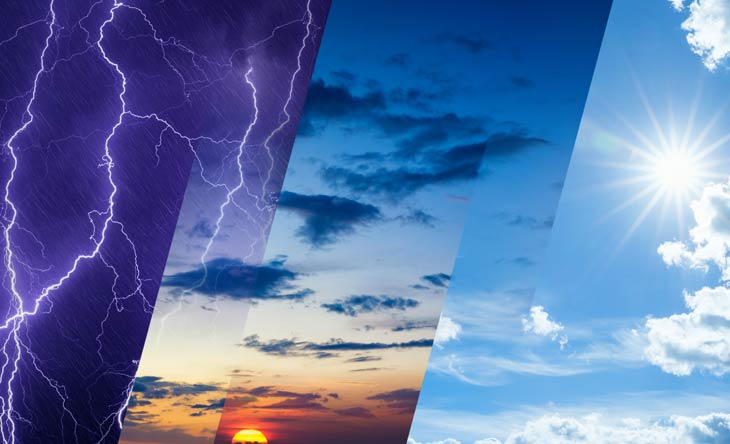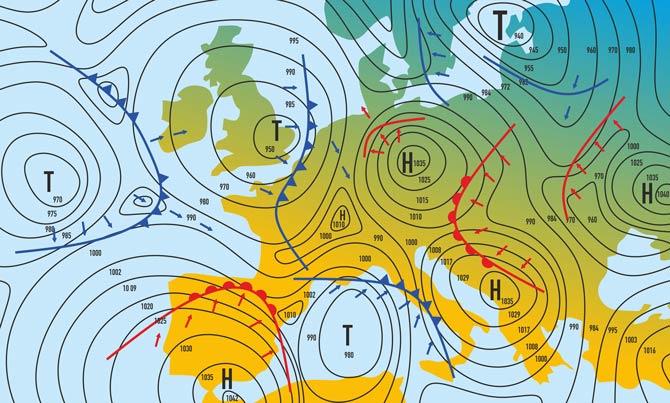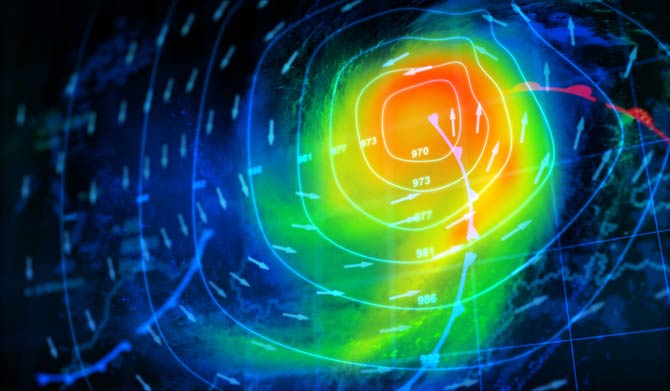
Cheaper, more accurate and faster: Google uses these attributes to promote its “Graphcast” product. Behind this is an artificial intelligence that is intended to create medium-term weather forecasts with “unprecedented accuracy”.
Faster weather forecasts
As employees of the Graphcast research team emphasize, the new AI warns of extreme weather events much more quickly. For example, Graphcast is able to accurately predict upcoming hurricane tracks or forecast extreme temperatures.
In addition, the system can identify atmospheric rivers that pose a potential risk of flooding.
These properties offer those affected the opportunity to potentially even save lives with appropriate preparations.

In the first comparisons, we are ahead
To illustrate the capabilities of the weather service, Google researchers made a special comparison in the scientific magazine “Science” a few weeks ago. They presented the AI that predicted several hundred weather variables over ten days in less than a minute. In 90 percent of all forecasts, “Graphcast” was more accurate than weather forecasts from the European Center for Medium-Range Weather Forecasts.
The individual metrics related to wind speed, humidity and temperature.


Critical voices from meteorologists
The German Weather Service is nevertheless critical of these models and announcements. Meteorologists attest that AI has “great potential”. Nevertheless, they see the strengths of AI in its speed rather than accuracy.
There are particularly large deficits in the prediction of weather extremes, the form of which has so far been rare or non-existent.
These deficits are due to the way the machine works. In the magazine, the developers of “Graphcast” revealed that classic weather forecasts improve their forecast accuracy through increased computing resources. However, no historical weather data is used to improve the weather model used.
But these “reanalysis data” used by AI are problematic in the eyes of many meteorologists. While the AI analyzes learning algorithms from the past, meteorologists' weather models solve basic physical equations.
How do meteorologist analyzes work?
As the German Weather Service explains, meteorologists record the initial state of the atmosphere by taking all observation data into account in their weather model. They then transfer the equations into the future in order to analyze future weather conditions.
This numerical method is also used, for example, to make precise precipitation forecasts in current flood situations. The effort involved in this process is relatively high. But the forecasts are also significantly more reliable than with AI processes that only take similarities into account.


Quality over speed?
In this context, DWD spokesman Uwe Kirsche adds that speed only plays a subordinate role in weather forecasts. After all, it is rather unimportant how quickly the weather forecast is made.
The quality of the weather forecast is much more important.
The German Weather Service calculates a global weather model twice a day, which applies to 90 layers within the atmosphere for one week at a time. In addition, the meteorologists create eight more runs for Germany and four more runs for Europe.
High computing performance?
An important component is computing power, as meteorologists have to process more and more data. Accordingly, larger computers are necessary that can process the data. The German Weather Service is currently working with a computer that cost around 120 million euros.
Nevertheless, meteorologists assume that AI can be used to support weather forecasts. That's why the DWD is currently testing AI in almost all areas. With these measures, the weather experts are striving to permanently improve all important weather forecasting processes.
Source: https://www.blog.de/wetterdienste-zukuenftige-prognosen-durch-ki/


